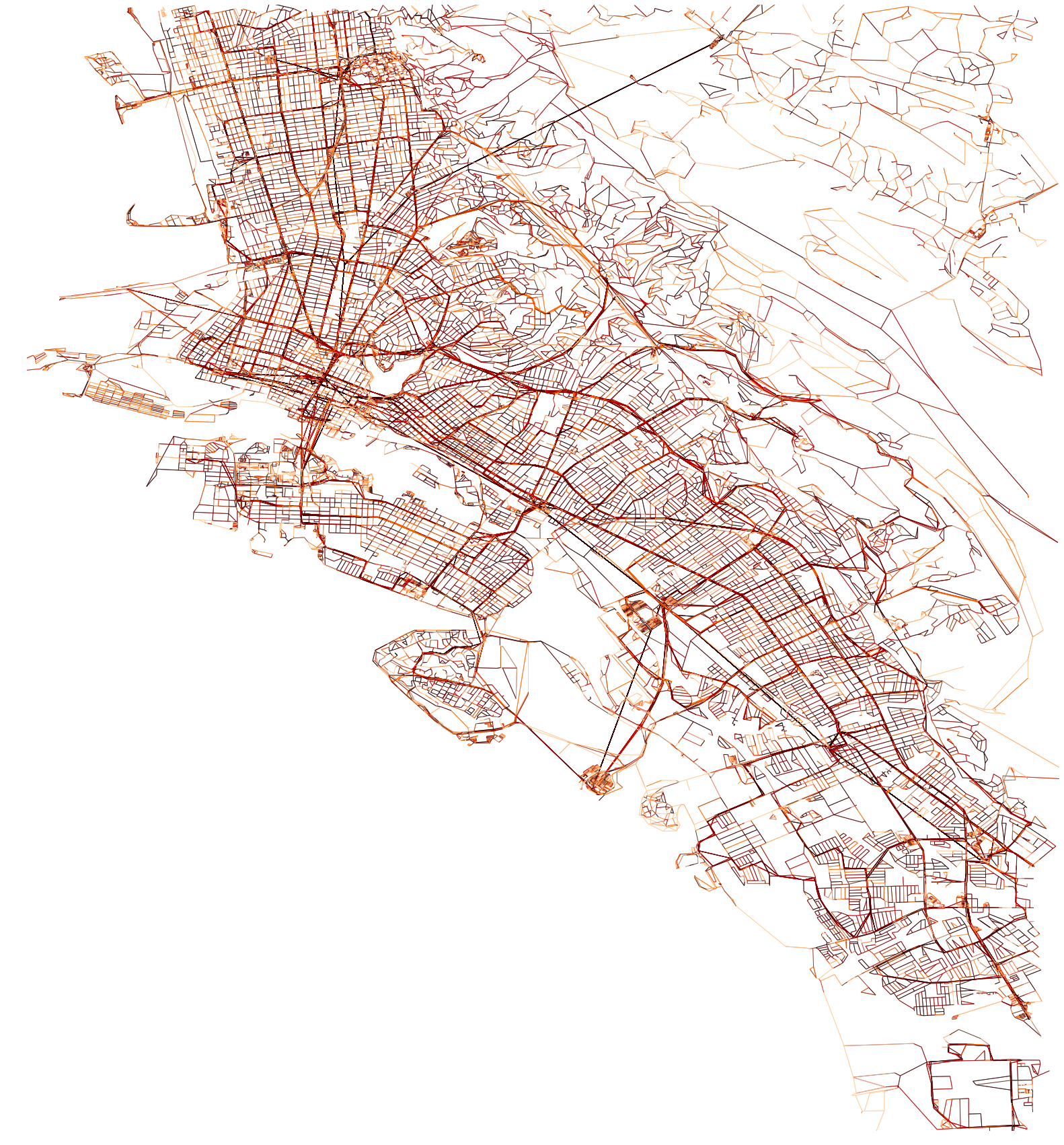A tool for computing GTFS transit and OSM pedestrian networks for accessibility analysis.
 Integrated AC Transit and BART transit and pedestrian network travel times for Oakland, CA
Integrated AC Transit and BART transit and pedestrian network travel times for Oakland, CA
UrbanAccess is tool for creating multi-modal graph networks for use in multi-scale (e.g. address level to the metropolitan level) transit accessibility analyses with the network analysis tool Pandana. UrbanAccess uses open data from General Transit Feed Specification (GTFS) data to represent disparate operational schedule transit networks and pedestrian OpenStreetMap (OSM) data to represent the pedestrian network. UrbanAccess provides a generalized, computationally efficient, and unified accessibility calculation framework by linking tools for: 1) network data acquisition, validation, and processing; 2) computing an integrated pedestrian and transit weighted network graph; and 3) network analysis using Pandana.
UrbanAccess offers the following tools:
- GTFS and OSM network data acquisition via APIs
- Network data validation and regional network aggregation
- Compute network impedance:
- by transit schedule day of the week and time of day
- by transit mode
- by including average passenger headways to approximate passenger transit stop wait time
- Integrate pedestrian and transit networks to approximate pedestrian scale accessibility
- Resulting networks are designed to be used to compute accessibility
metrics using the open source network analysis tool
Pandana
- Compute cumulative accessibility metrics
- Nearest feature analysis using POIs
Let us know what you are working on or if you think you have a great use
case by tweeting us at @urbansim or post on the UrbanSim
forum.
To cite this tool and for a complete description of the UrbanAccess methodology see the paper below:
For other related literature see here.
Forthcoming improvements:
- Unit tests
Please report any bugs you encounter via GitHub issues.
If you have improvements or new features you would like to see in UrbanAccess:
- Open a feature request via GitHub issues.
- Contribute your code from a fork or branch by using a Pull Request and request a review so it can be considered as an addition to the codebase.
UrbanAccess is available on conda and can be installed with:
conda install -c udst urbanaccess
UrbanAccess is available on PyPI and can be installed with:
pip install -U urbanaccess
Developers contributing code can install using the develop command rather than install. Make sure you are using the latest version of the codebase by using git's git pull inside the cloned repository.
To install UrbanAccess follow these steps:
- Git clone the UrbanAccess repo
- in the cloned directory run:
python setup.py develop
To update to the latest development version:
Use git pull inside the cloned repository
Documentation for UrbanAccess can be found here.
A demo jupyter notebook for UrbanAccess can be found in the demo directory.
The minimum GTFS data
types required to use
UrbanAccess are: stop_times, stops, routes, calendar,
and trips however if there is no calendar, calendar_dates
can be used as a replacement.